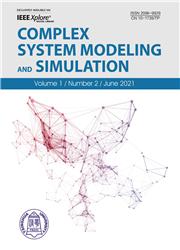Spare Part Replenishment Strategy for Electronic Product Based on Model Predictive Control
引用次数: 0
Abstract
After-sale service plays an essential role in the electronics retail industry, where providers must supply the required repair parts to consumers during the product warranty period. The rapid evolution of electronic products prevents part suppliers from maintaining continuous production, making it impossible to supply spare parts consistently during the warranty periods and requiring the providers to purchase all necessary spare parts on Last Time Buy (LTB). The uncertainty of customer demand in spare parts brings out difficulties to maintain optimal spare parts inventory. In this paper, we address the challenge of forecasting spare parts demand and optimizing the purchase volumes of spare parts during the regular monthly replenishment period and LTB. First, the problem is well defined and formulated based on the dynamic economic lotsize model. Second, a transfer function model is constructed between historical demand values and product sales, aiming to identify the length of warranty period and forecast the spare part demands. In addition, the linear Model Predictive Control (MPC) scheme is adopted to optimize the purchase volumes of spare part considering the inaccuracy in the demand forecasts. A real-world case considering different categories of spare parts consumption is studied. The results demonstrate that our proposed algorithm outperforms other algorithms in terms of forecasting accuracy and the inventory cost.基于模型预测控制的电子产品备件补货策略
售后服务在电子产品零售业中起着至关重要的作用,供应商必须在产品保修期内向消费者提供所需的维修部件。电子产品的快速发展使零部件供应商无法保持连续生产,使其不可能在保修期内持续供应备件,并要求供应商在最后一次购买(LTB)中购买所有必要的备件。客户对备件需求的不确定性给备件库存的优化带来困难。在本文中,我们解决了在每月定期补货期和LTB期间预测备件需求并优化备件采购量的挑战。首先,根据动态经济lotsize模型对问题进行了明确的定义和表述。其次,建立了历史需求值与产品销售之间的传递函数模型,用于识别保修期长度并预测备件需求;此外,考虑到需求预测的不准确性,采用线性模型预测控制(MPC)方案对备件采购量进行优化。研究了一个考虑不同类别备件消耗的实际案例。结果表明,本文提出的算法在预测精度和库存成本方面优于其他算法。
本文章由计算机程序翻译,如有差异,请以英文原文为准。
求助全文
约1分钟内获得全文
求助全文

 求助内容:
求助内容: 应助结果提醒方式:
应助结果提醒方式:


